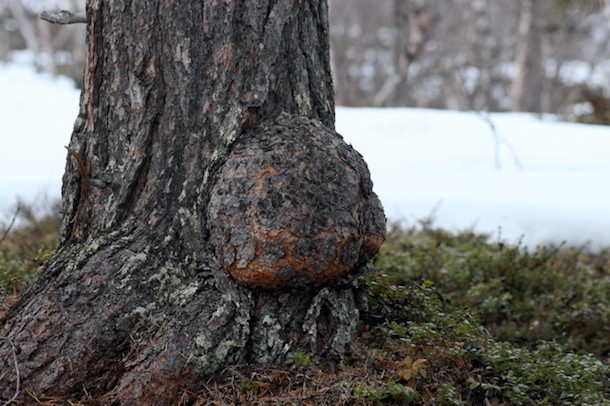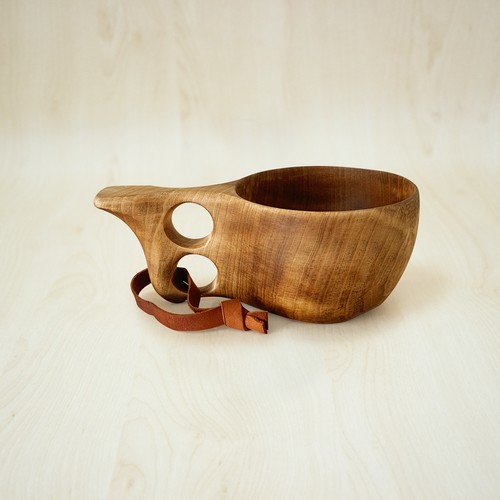The differences between an ordinary wooden cup and a traditional Finnish kuksa
In this article, we reveal the essential points to avoid confusing an ordinary wooden cup with a kuksa traditionally made in Finnish Lapland. Discover, point by point, the clues to determine the authenticity of a real Kuksa.

Alexis Le Baron

Published on 4 November 2021 (Updated on 21 November 2023)
Kuksa have always been a hiker's best friend and still are. They are strong, quiet and beautiful.
They also make it easy to drink hot beverages, as they do not burn the lips or hands. In addition, they keep the heat in cold places.
It is better to buy a high quality kuksa to :
- Prolong its life
- To have a better resistance
- To have a quality refining
Indeed, unlike wooden cups, kuksa keep better and are more pleasant to use every day.
In this article, you will find 6 points that will help you determine the authenticity of a kuksa.
1. The salty taste of the first uses
During the last stage of production, the kuksa are boiled for 6 to 8 hours in salted water to improve their longevity.
Thus, this salty taste is present during the first uses.
Moreover, when a kuksa is produced and not used for a long period of time, it can dry out and cause small salt crystals to appear on the wood.
This salty taste can be disturbing at first, but is easily eliminated by using the cup and cleaning it with mild soap.
It is also one of the few things that can really tell you the authenticity of your kuksa.
2. The wood used
The authentic material of a kuksa is the "pahka" in Finnish or birch burl. It is a growth of the tree that is found on the trunk or branches.
This is the traditional material. It is also a strong and durable wood.

Pahka is easy to handle because of its round shape and can therefore be cut in any way you like.
Unlike kuksa, the materials used for ordinary wooden cups, often made in China, are hard plastic and pine wood.
Thus, these components can result in :
- Cause stains and damage to the cup
- Have a shorter shelf life and durability
- Become dirty more easily
- In extreme cases, the appearance of small holes
- A dry surface that is more or less flammable
- Do not retain the heat of the drink
Soak up the essence of Finnish craftsmanship as you explore the history and manufacture of this traditional mug. By subscribing, you'll receive weekly updates on kuksa.
3. Wood patterns of the cup
Wood has, as we often see, circle-shaped marks, but they are not always perfect circles, they can also be random shapes.

It's difficult to tell on some cups whether they are a man-made or a natural circle. Only the discerning eye will be able to recognize them.
4. The method of manufacture of the cup
In the past, kuksa were :
- Handmade
- A difficult and very manual job
- Very long to cut
- Required a lot of raw materials. Therefore a lot of wood was wasted.
Nowadays, kuksa :
- Are sometimes made with machines
- Requires less raw material thanks to machines
Machine-made kuksa lose a certain authenticity compared to traditional Sami handmade kuksa.
However, it is still a symbol of Sami culture.
5. The designer's signature often on the back of the cup
Some Kuksa are signed on the bottom of the cup by the maker. This is not a guarantee of quality, but it can be a sign of authenticity.
6. The colour of the cup
The colour of a wooden cup can help you to recognise whether it is a genuine kuksa or not.
However, this is not the only thing you should look for.
The colour of the wood of a kuksa can vary greatly.
Because the colour of the wood sometimes changes with the seasons.
- If your cup is a very light beige or brown colour, this is often a bad sign.
- A medium or dark brown colour is a more reassuring choice.
You can see on this picture below, the difference between a wooden cup made in China (top) and a traditional kuksa handmade by a Finnish artisan (bottom).


Unique wooden mugs for unforgettable moments
Start shopping now 🌿
Come and discover our wooden tableware from Finland. Handmade tableware that will accompany young and old alike for years to come!
Customer Favorites, the most loved kuksa cups
Durable, lightweight, and timeless, the Kuksa is perfect for those looking to combine tradition, nature, beauty, and functionality.
Want to know more about kuksa?
You are passionate about kuksa, then these articles should also interest you.

Anne-Laure Compain

Anne-Laure Compain
TYPES OF WOOD
Which wood should be used to make a kuksa?The traditional kuksa is made of birch burl, but it can be carved in other woods !

Anne-Laure Compain

Anne-Laure Compain

Anne-Laure Compain

Anne-Laure Compain
Subscribe to our newsletter and receive your discount code in your mailbox!

















